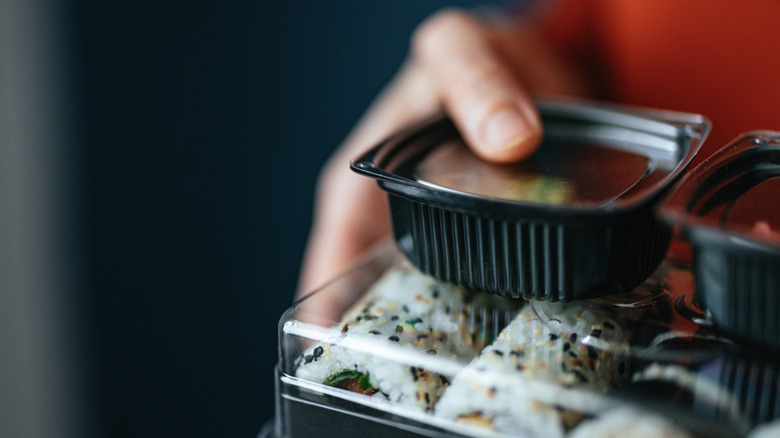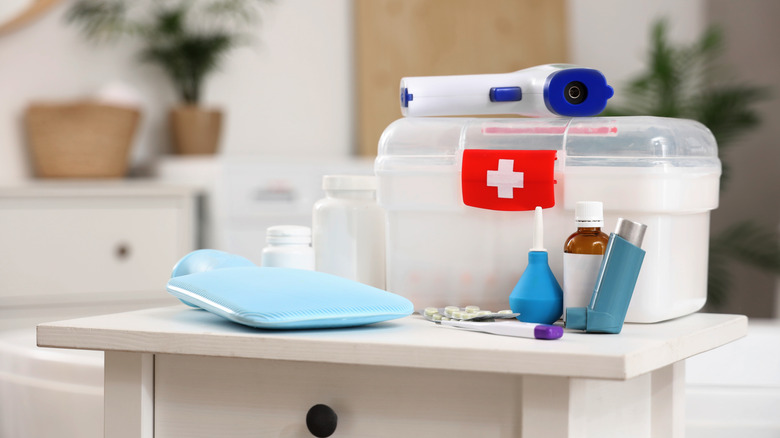A Reused Takeout Container Can Be A Literal Life-Saver: Here's How
After you finish eating your leftovers, don't throw away your takeout container. Sure, its great to keep around for future food storage, and its free price point means you can send food home with friends without hassling them to wash and return it. But a takeout container can also serve a more unexpected and necessary purpose. Use it as a first aid kit so you're never without the necessities when you need them.
A first aid kit is one of the emergency supplies that every house should have stocked. You could go out and buy a pre-made first-aid kit, but buying supplies in bulk and creating your own will save you money. You'll also be able to stock it with the items you're most likely to need, eliminating waste. It's also a good idea to have a well-stocked first aid kit in several locations, and take-out containers make it easy to keep multiples around. Put one on each floor of your house so you always have it close at hand. You should also put one in every car, including the grandparents', if they frequently give your kids rides. Before you give your plastic takeout container new life, wash it thoroughly and label it clearly. Store it somewhere you can easily get to it but out of reach of children.
What to include in your takeout container first-aid kit
Although assembling your own first aid kit allows you to tailor it to your family's needs, there are some staples that every first aid kit should include. Start with a non-stinging antiseptic cleanser. Any injury that breaks the skin should be cleaned thoroughly before you do anything else. Stock some sterile gauze pads to wipe away the antiseptic or to apply pressure to stop bleeding for more serious injuries. Include bandages and gauze in a variety of sizes so you'll be ready for everything from small scratches to deep wounds. Keep some antibiotic ointment in your kit to apply after you clean the wound. You should also include medicine for other common scenarios you may encounter, such as insect stings or poison ivy. Hydrocortisone cream and calamine lotion will help with itchy rashes or bites. Medicines such as Benadryl and ibuprofen will cover allergic reactions or unexpected headaches. Chewable aspirin can be a real lifesaver in the event of a heart attack, but remember, children and teenagers shouldn't take aspirin, due to the danger of developing Reye's syndrome.
Add other items based on your lifestyle. If you regularly head out into the woods on long hikes, you'll need different supplies than someone who lives in the city and is never more than a few steps away from help when needed. If you fall and break your arm several miles from civilization, splinting it properly and taking some ibuprofen can make the pain bearable while you walk back to your car. A first aid kit, along with essentials to keep packed in the house in case of an emergency evacuation, will ensure you're prepared when disaster strikes, or someone gets a splinter.

